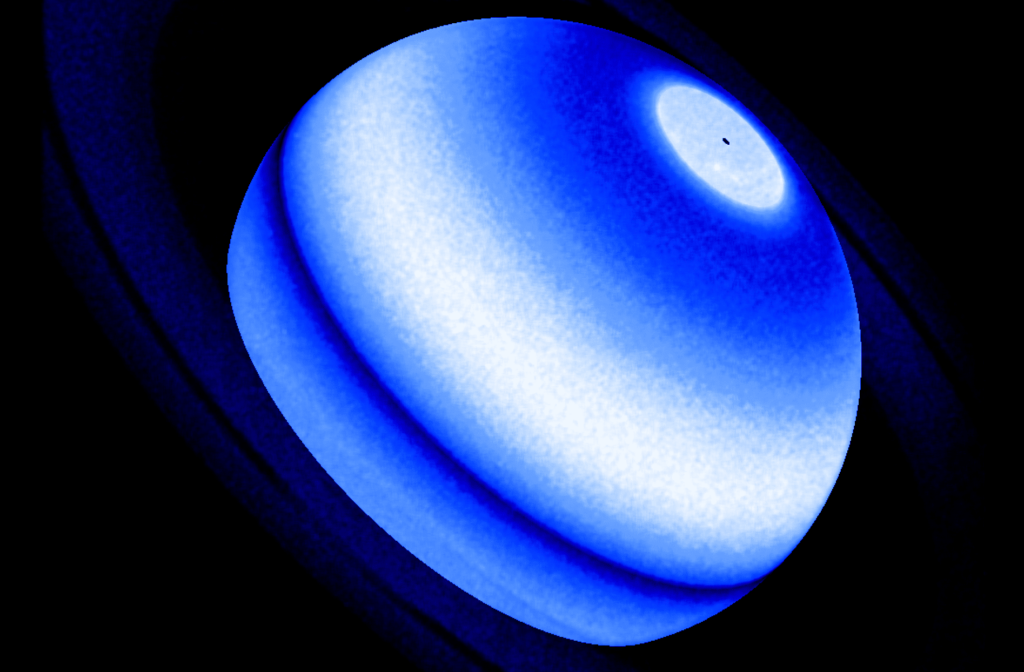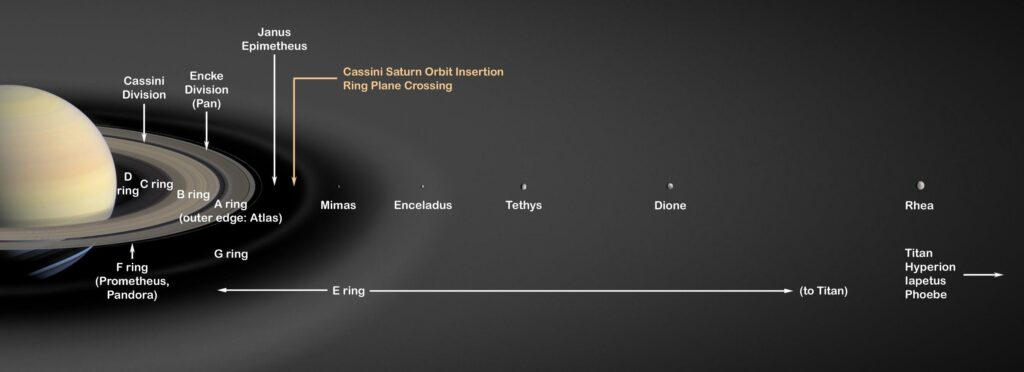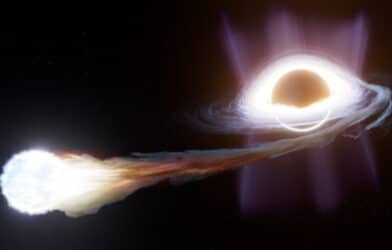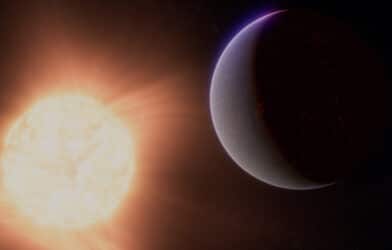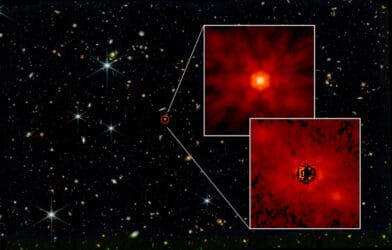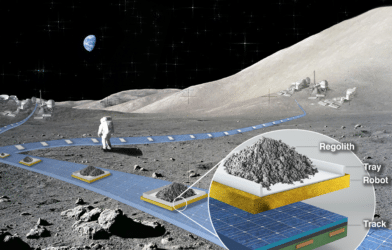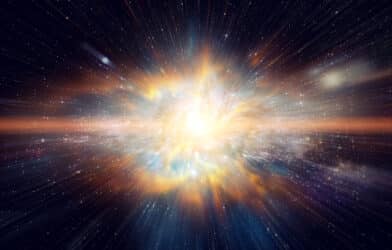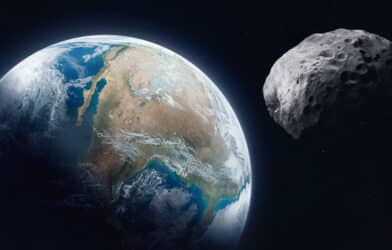Astronomers have discovered that Saturn’s rings are heating the planet’s upper atmosphere, a phenomenon never before seen in our solar system. This unexpected interaction between Saturn and its rings could help predict if planets around other stars have similar ring systems.
The discovery was made using observations from NASA’s Hubble Space Telescope, the retired Cassini probe, Voyager 1 and 2 spacecraft, and the retired International Ultraviolet Explorer mission.
The evidence comes from an excess of ultraviolet (UV) radiation in Saturn’s atmosphere, seen as a spectral line of hot hydrogen. This increase in radiation suggests that something is heating the upper atmosphere from the outside. The most likely explanation is that icy ring particles are raining down onto Saturn’s atmosphere, causing this heating. The process might involve the impact of micrometeorites, solar wind particle bombardment, solar UV radiation, or electromagnetic forces picking up electrically charged dust. All of these events are influenced by Saturn’s gravitational field, which pulls particles into the planet.
“Everything is driven by ring particles cascading into the atmosphere at specific latitudes. They modify the upper atmosphere, changing the composition. And then you also have collisional processes with atmospheric gasses that are probably heating the atmosphere at a specific altitude,” explains Lotfi Ben-Jaffel, from the Institute of Astrophysics in Paris and the Lunar & Planetary Laboratory, University of Arizona, in a statement.
To reach this conclusion, Ben-Jaffel analyzed archival UV observations from four space missions that studied Saturn. He used measurements from Hubble’s Space Telescope Imaging Spectrograph (STIS) to calibrate the archival UV data from all four missions. He found that the spectra are consistent across all the missions, thanks to Hubble’s precise reference point. Ben-Jaffel also discovered that there is no difference in the level of UV radiation, which supports the idea of a steady “ice rain” from Saturn’s rings as the best explanation for the heating.
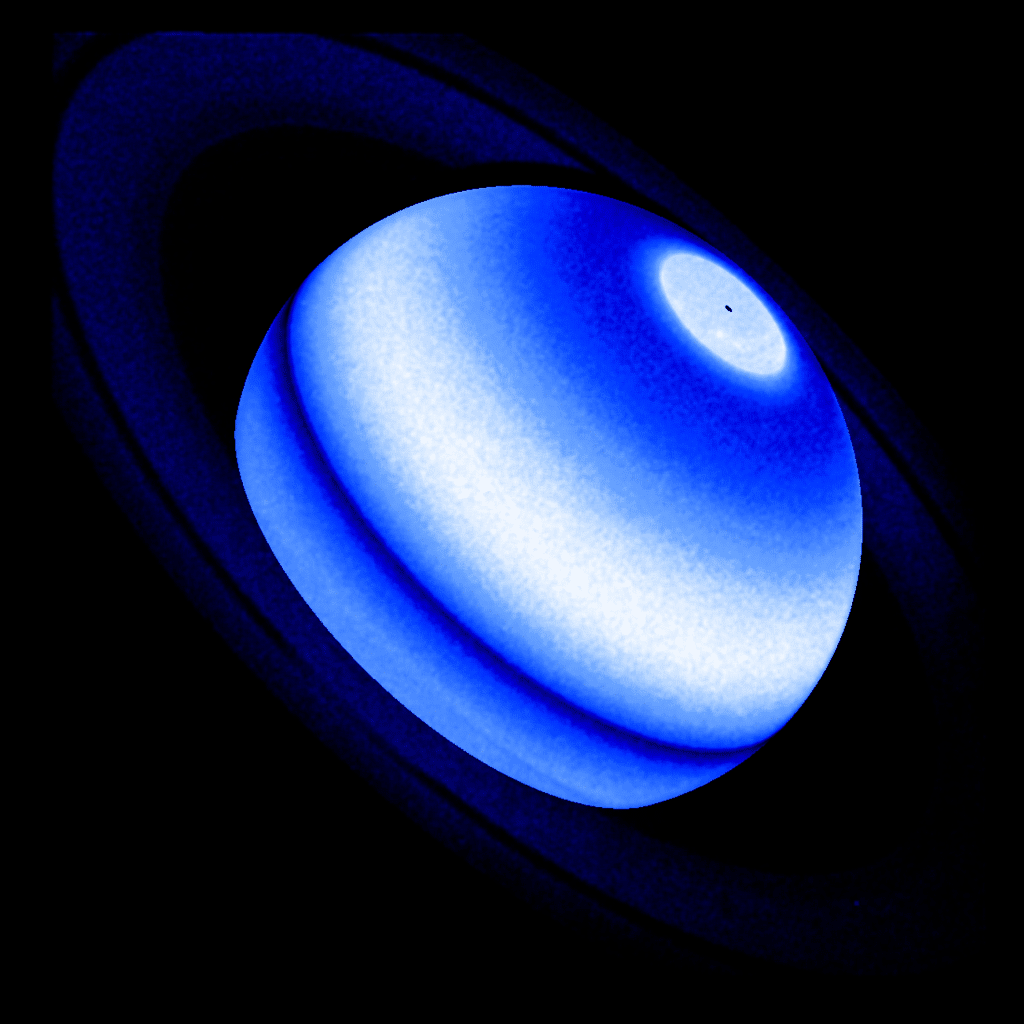
This discovery marks the beginning of understanding the ring characterization effect on the upper atmosphere of a planet. Astronomers aim to develop a global approach that would reveal information about the atmospheres of distant worlds. One of the study’s goals is to see how this research can be applied to planets orbiting other stars, in what is called the search for “exo-rings.”
The Hubble Space Telescope is an international collaboration between NASA and the European Space Agency (ESA). NASA’s Goddard Space Flight Center in Maryland manages the telescope, while the Space Telescope Science Institute (STScI) in Baltimore conducts its science operations. The Association of Universities for Research in Astronomy operates the STScI for NASA.
What do we know about Saturn’s rings?
Saturn’s rings are a collection of ice, rock, and dust particles that orbit around the planet. They are very thin, but they stretch out far and wide. There are several main rings, named A, B, C, D, E, F, and G, with the A, B, and C rings being the most visible and largest. The rings are held in place by the planet’s gravity and the influence of its moons.
Scientists believe that the rings formed from the debris of a broken-up moon, comet, or asteroid that got too close to Saturn and was torn apart by its strong gravity. The particles in the rings range from tiny dust grains to large chunks of ice, some as big as a house.
The rings are constantly changing due to the interaction between the particles and Saturn’s moons. Some moons help create gaps in the rings, while others cause waves and other interesting features in the ring system.
The Cassini spacecraft, which explored Saturn and its rings between 2004 and 2017, provided us with valuable information about the rings’ composition, structure, and age. We now know that the rings are mostly made of water ice, with some rocky material and dust mixed in.
Overall, Saturn’s rings are a beautiful and dynamic feature of our solar system that continues to fascinate scientists and space enthusiasts alike.
